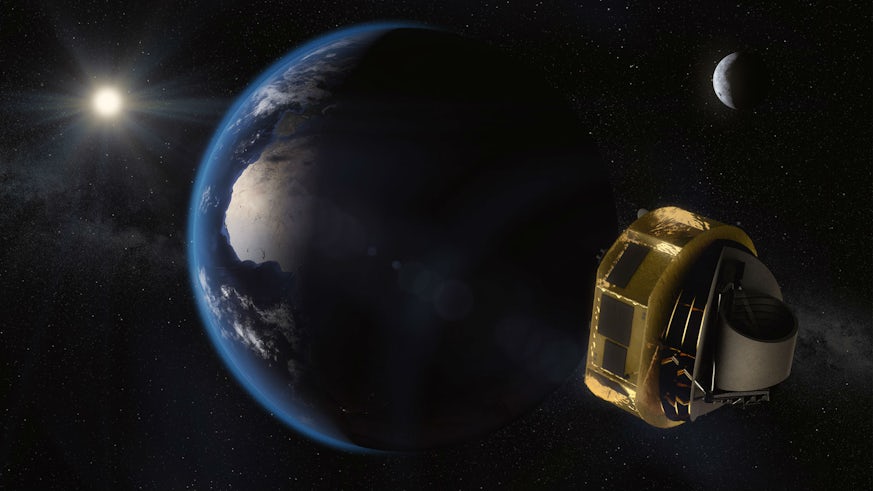Green light for exoplanet mission
20 March 2018

Cardiff University scientists will be part of an international space mission, which the European Space Agency (ESA) has announced today, to investigate fundamental questions about how mysterious exoplanets form and evolve.
The ARIEL mission, which has been given the green light by ESA and will launch in 2028, will produce the first ever large-scale survey of the atmospheric chemistry of planets outside our solar system.
The four-year mission will extract the chemical fingerprints of the gases in the atmospheres of over 1000 exoplanets, as well as capturing information about the temperatures and pressures in their atmospheres and the presence of clouds.
Scientists from Cardiff University’s School of Physics and Astronomy will be providing detailed computer simulations of the ARIEL satellite and its instruments, ensuring that the scientific observations can be carefully planned and the resulting data can be analysed correctly. The team will also be involved in interpreting the data from the observations to characterise the atmospheres of the exoplanets.
Professor Matt Griffin, head of Cardiff University’s School of Physics and Astronomy and a member of the School’s Astronomy Instrumentation Group, said: “The decision to select the ARIEL mission demonstrates the scientific vision and ambition of ESA, and it’s the start of a great adventure for everyone involved. This is a mission that will hugely advance our understanding of the nature of planets and of our place in the Universe, and at Cardiff we are very much looking forward to our participation in the project.”
ARIEL’s Principal Investigator, Professor Giovanna Tinetti of University College London, said: “Although we’ve now discovered around 3800 planets orbiting other stars, the nature of these exoplanets remains largely mysterious. ARIEL will study a statistically large sample of exoplanets to give us a truly representative picture of what these planets are like. This will enable us to answer questions about how the chemistry of a planet links to the environment in which it forms, and how its birth and evolution are affected by its parent star.”
ARIEL will study a diverse population of exoplanets ranging from Jupiter- and Neptune-size planets down to super-Earths. While some of the planets may be in the habitable zones of their stars, the main focus of the mission will be on warm and hot planets in orbits close to their stars.
It is in the scorching temperatures close to stars that the molecules from the surface of an exoplanet make their way into the atmosphere, providing detailed information about the planet’s internal composition.
The satellite will be equipped with a mirror to collect visible and infrared light from distant star systems, a spectrometer to detect the chemical fingerprints from the light, and a photometer and guidance system to capture information on the presence on clouds in the atmospheres of the exoplanets and to allow the spacecraft to point to the target star with very high stability.
ARIEL will be launched from Kourou in French Guiana and will be placed around 1.5 million kilometres beyond the Earth’s orbit around the Sun. The satellite will be shielded from the Sun and will have a clear view of the whole sky to target the exoplanets more easily.
The ARIEL mission has been developed by a consortium of more than 60 institutes from 15 ESA member state countries. The mission will cost 450 million Euros, with additional national funding for the scientific instruments.
The ARIEL Consortium Project Manager, Paul Eccleston, of STFC RAL Space, said: “It is wonderful news that ESA have selected ARIEL for the next medium-class science mission. The team are very excited to have the opportunity to realise the mission we’ve been developing for the last two years. ARIEL will revolutionise our understanding of how planetary systems form and evolve, helping us put our own solar system into context and compare it to our neighbours in the galaxy.”
Share this story
It is a friendly, approachable School with a strong commitment to teaching excellence and world class research in physics and astronomy.

